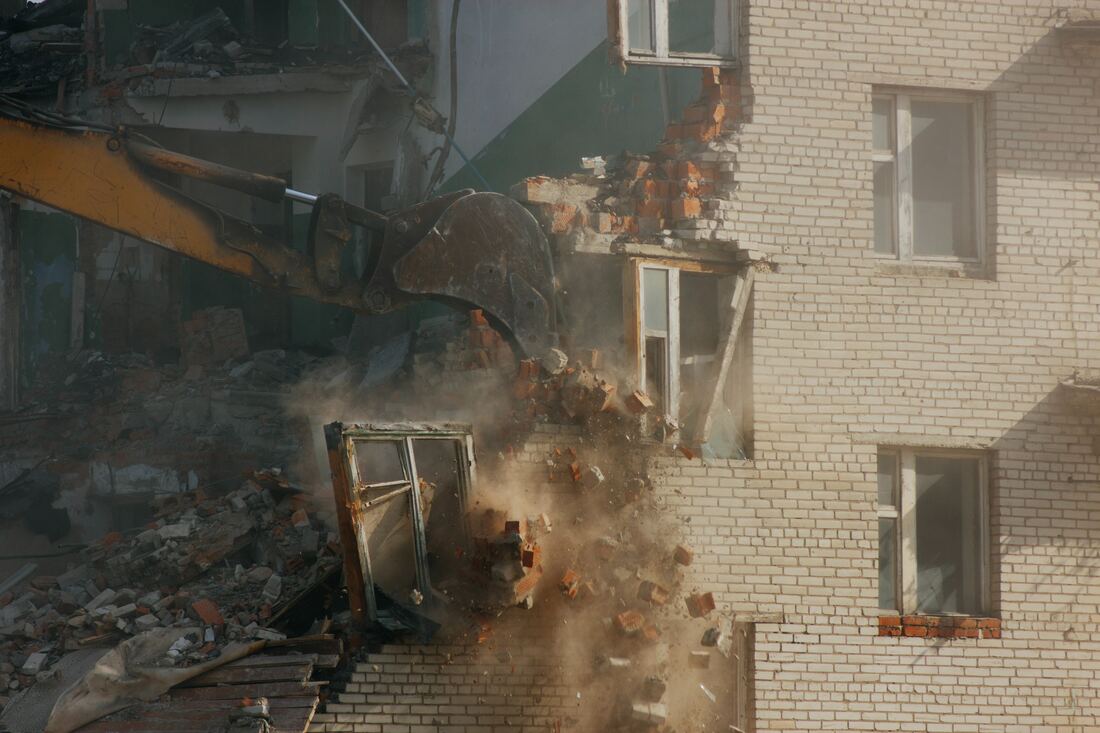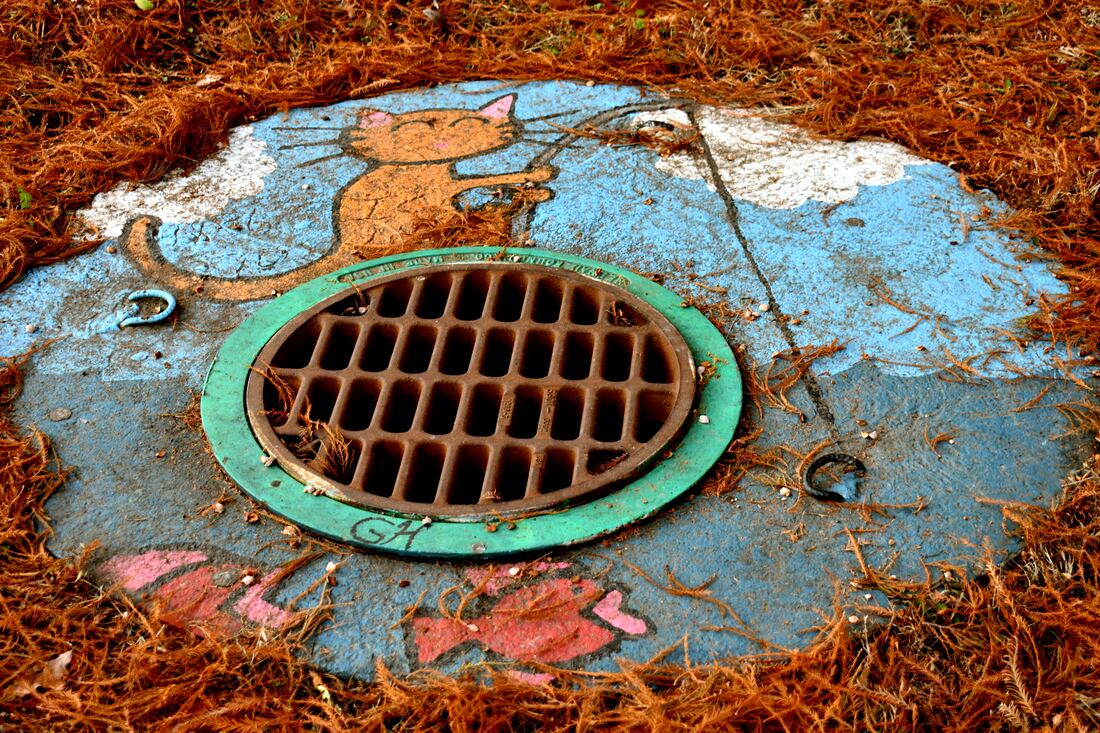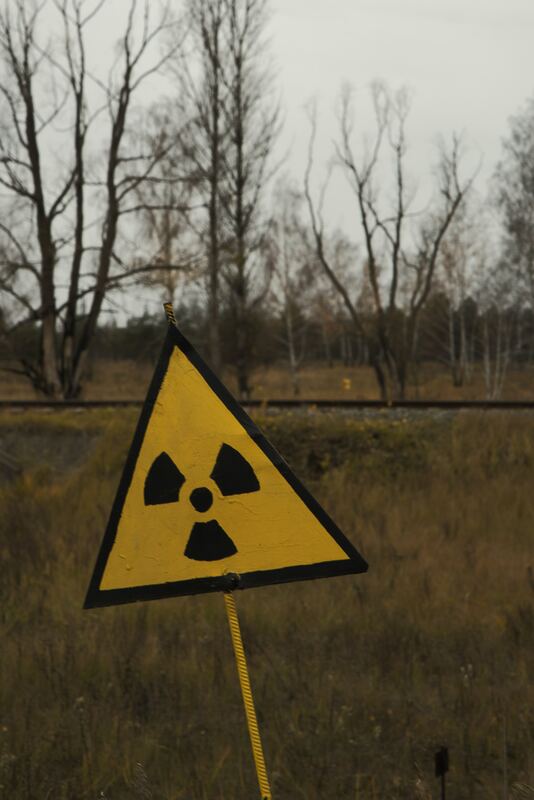|
Since I’ve had a chance to live and spend time in Japan, the United States, and Mexico, not to mention all the time spent in industrial facilities all over the world, I’ve been able to see a number of different approaches to razing buildings. I love the term “razing,” because it can encompass a whole range of different techniques.
The most elegant work I’ve seen is in Tokyo, where space constraints and very strict waste management rules means that buildings are not demolished but are dismantled piece by piece. Here is a great little video that shows some of the challenges and solutions of working in Japan. I’ve inspected many recycling facilities and building sites in Japan, and I will forever be in awe at the degree to which waste materials are separated and recycled, to avoid creating waste that must go into scarce landfill space. We could all learn a lot about recycling from Japan. There is even one technique, Daruma Otoshi, that involves removing a floor at a time, starting at the bottom of the building. This remains one of my favorite ever demolition videos, especially since I’ve spent a lot of time inside the Prince Hotel before it was closed down. And another short video that does a great job of showing Daruma Otoshi in time lapse. With our excess of space and cheap landfills in the United States, we’re not quite so careful. In fact, we’re famous for our method of imploding buildings, which has spread to other areas of the world. There are even highlight reels of annual building implosions, including this one. Of course, we still demolish most buildings with heavy equipment and a lot of time and effort. Two of the most common methods are with a wrecking ball (old school) and with a high reach excavator (newer school). Building demolition in the U.S. can create a huge amount of dust, and cleaning up afterwards is really just picking everything up and trucking it all to a landfill. That means you have to remove any hazardous building materials before any demolition starts. Hazardous building materials can include asbestos, both in insulation and in everything from wall board to floor tiles. Use of friable asbestos was phased out before 1980, but asbestos can still be found in a wide range of building materials at relatively low concentrations. Lead-based paint has a similar story. It is still used on some exterior applications and was used quite a bit on interiors before 1978. Before polychlorinated biphenyls were banned in 1979, they were used extensively as insulation in liquid filled electrical equipment ranging from transformers and capacitors to small fluorescent light fixture ballasts. PCBs were also used as a plasticizer in paint (mostly in places like ships), and caulking. All of these hazardous building materials are strictly regulated as wastes and must be separated from other kinds of demolition waste. Asbestos gets landfilled in specially designed landfills where it can be sufficiently contained. Lead debris gets stabilized by mixing with concrete so that it won’t leach into the groundwater when it is landfilled. And all PCB waste gets incinerated at facilities that are designed to destroy these persistent organic chemicals at a 99.9999% destruction and removal efficiency.
24 Comments
In Arizona, there are three regulatory paths for stormwater discharge at industrial facilities:
This program falls under the National Pollutant Discharge Elimination System (NPDES) stormwater program of the national Clean Water Act, as applicable to the state and local jurisdiction where the subject property is located. States adopt general permits that cover a wide range of industrial and business activities. A permit must be obtained for facilities where stormwater is considered “contact stormwater”, from either the state or the city, depending on where the stormwater is discharged. However, some industrial activities are not covered or exempted under general permit standards. Non-contact stormwater flows on an industrial property means stormwater that does not come into contact with industrial operations or loading/unloading activities. For facilities that are not planning discharge pollutants into the stormwater system, there are two ways to proceed:
Our children will enjoy in their homes electrical energy too cheap to meter... It is not too much to expect that our children will know of great periodic regional famines in the world only as matters of history, will travel effortlessly over the seas and under them and through the air with a minimum of danger and at great speeds, and will experience a lifespan far longer than ours, as disease yields and man comes to understand what causes him to age.
Lewis Strauss, chair of the Atomic Energy Commission Even if you build the perfect reactor, you're still saddled with a people problem and an equipment problem. David R. Brower, environmental activist and founder of the Sierra Club I just started following The National Interest’s blog, and I’m enjoying the international perspective and diversity of contributors. I’m always interested in alternatives to carbon-based energy, and recently John Quiggin, an Australian economist, wrote about why he thinks that China’s nuclear program could work for them (Link: http://nationalinterest.org/commentary/china-can-make-nuclear-power-work-9815). I grew up in a time when nuclear power was going to solve all our energy problems, making electricity too cheap to meter. But Quiggin points out that even by the time the Three Mile Island meltdown occurred 1979, the nuclear plant building boom in the United States was nearing an end. Long delays, cost overruns, and public opposition resulted in no new nuclear plants being completed after 1980. In contrast, the French were successful at building a large number of nuclear reactors, in an effort to convert completely to nuclear energy in the wake of the 1970s energy crises. Arnulf Grubler, one of my favorite professors at Yale, pointed to four key factors in the success of the French:
Could China, which seems to have a lot in common with 1970s France, make nuclear power work for them to reduce the amount of coal they are burning? Quiggin seems to think it’s a good possibility and would be beneficial for everyone on our planet. He points out that “China is ruled by a modernising elite that’s procapitalist but happy to exercise state control over the economy, and to ignore or crush public opposition. Like France, China seems likely to standardize on a single Westinghouse model, the AP1000. So, it’s unsurprising to see Chinese nuclear projects being completed on time and on budget while similar projects in the US and Europe are floundering.” Of course, it might be difficult for those conditions to be sustained in China into the future, and if renewables become economically competitive, nuclear could be less attractive. I’ve spent a lot of time at all kinds of factories in China, including a number of coal fired power plants, biowaste facilities, and co-generation plants at large industrial plants. I’ve audited solar panel fabrication plants, transformer factories, and all kinds of factories making manufactured goods like CAT scan machines, escalators, and refrigerators. What worries me about nuclear power in China are the two things I see in common with all these facilities: not one of them had bothered going through the effort to get all their environmental permits in place, and not one of them had an appropriate operations and maintenance program to ensure that conditions at the factory when it was built would be sustained for more than a year or two after completion. And that brings me back to David Brower’s quote. Given the complexity and inherent risks associated with nuclear power, its success rests on the people and their ability to understand and maintain the equipment they are working with. I’m not sure any government or company can manage that for nuclear power over the lifetime of the plant and the waste it produces. |
Marty WaltersEnvironmental Scientist Archives
March 2021
Categories
All
|
Proudly powered by Weebly





 RSS Feed
RSS Feed